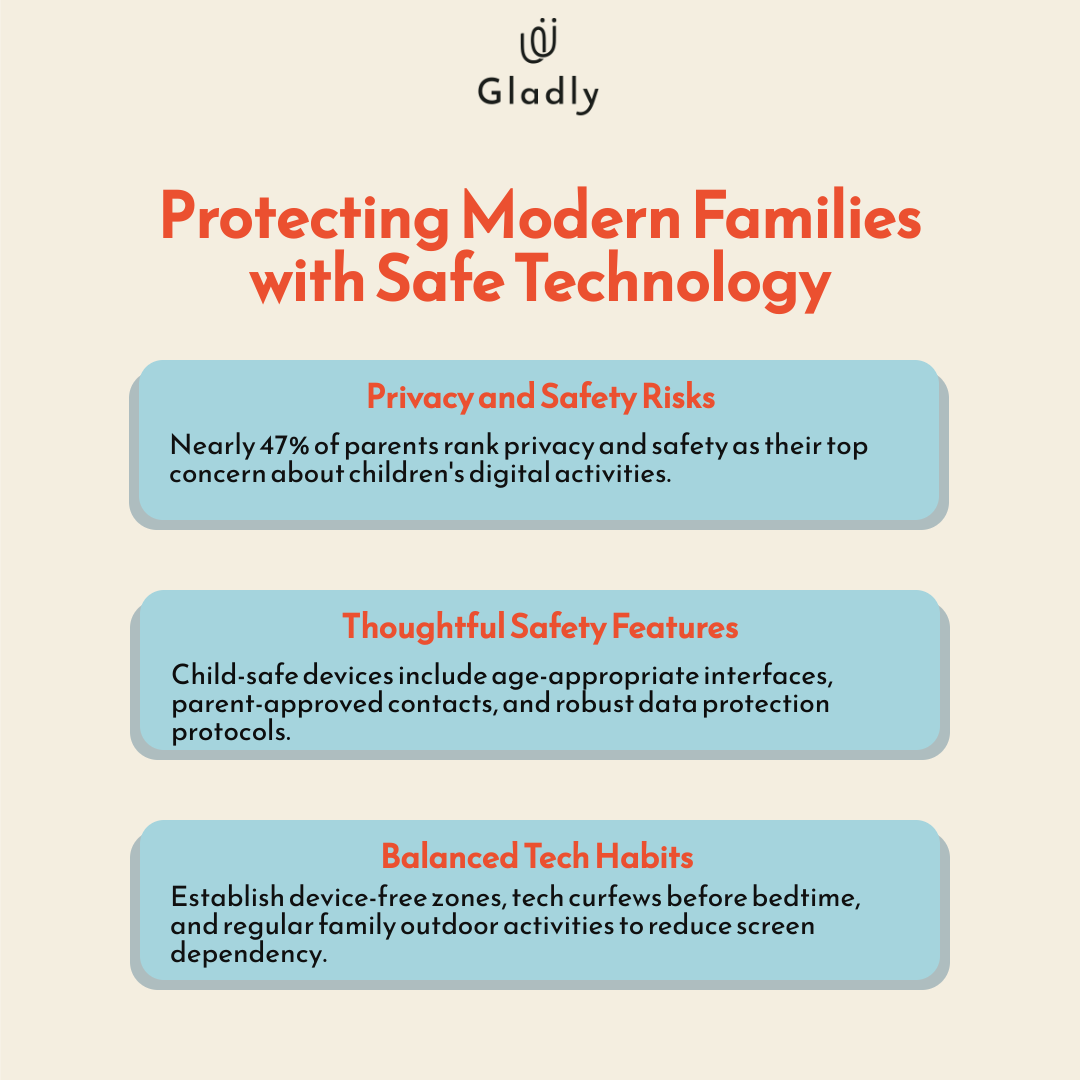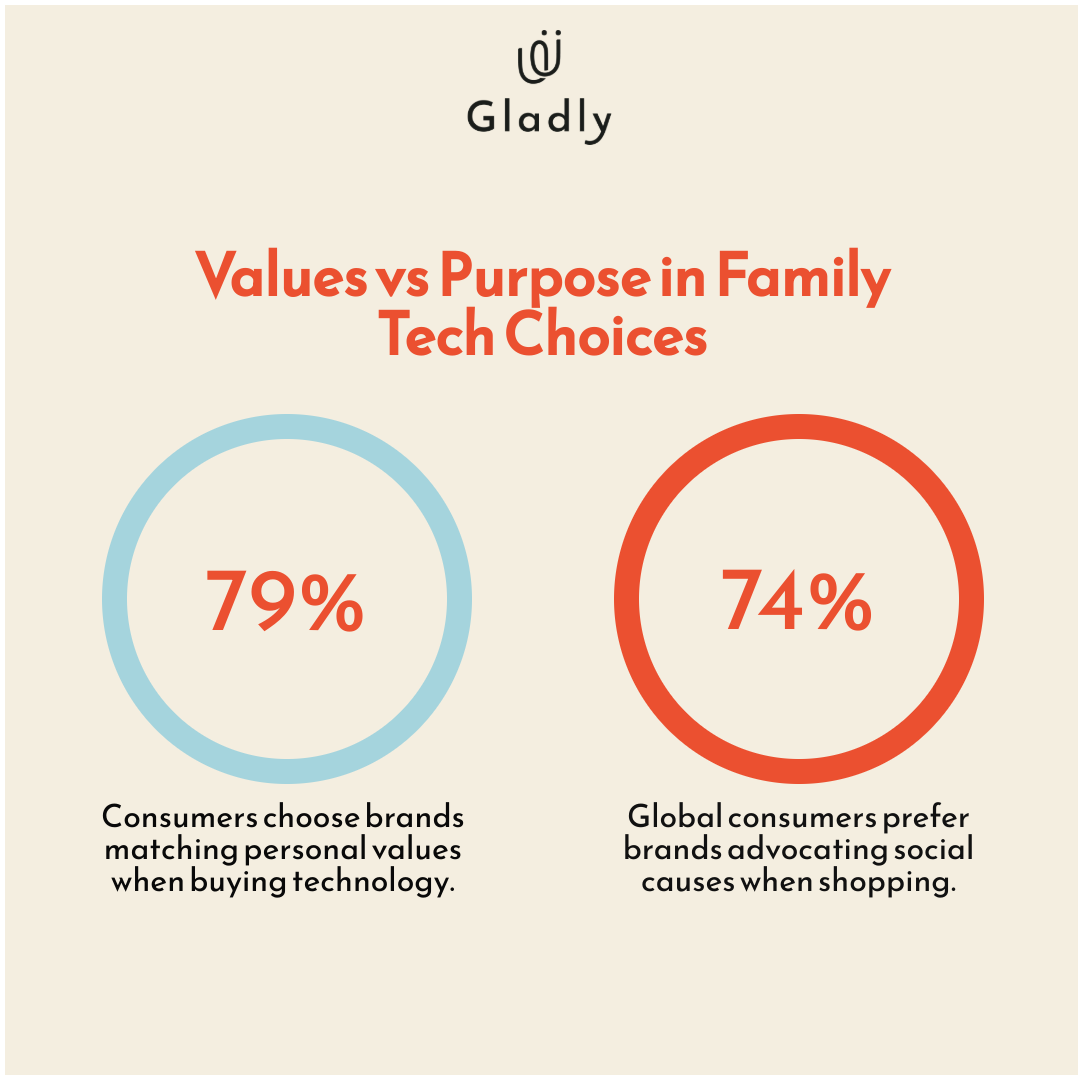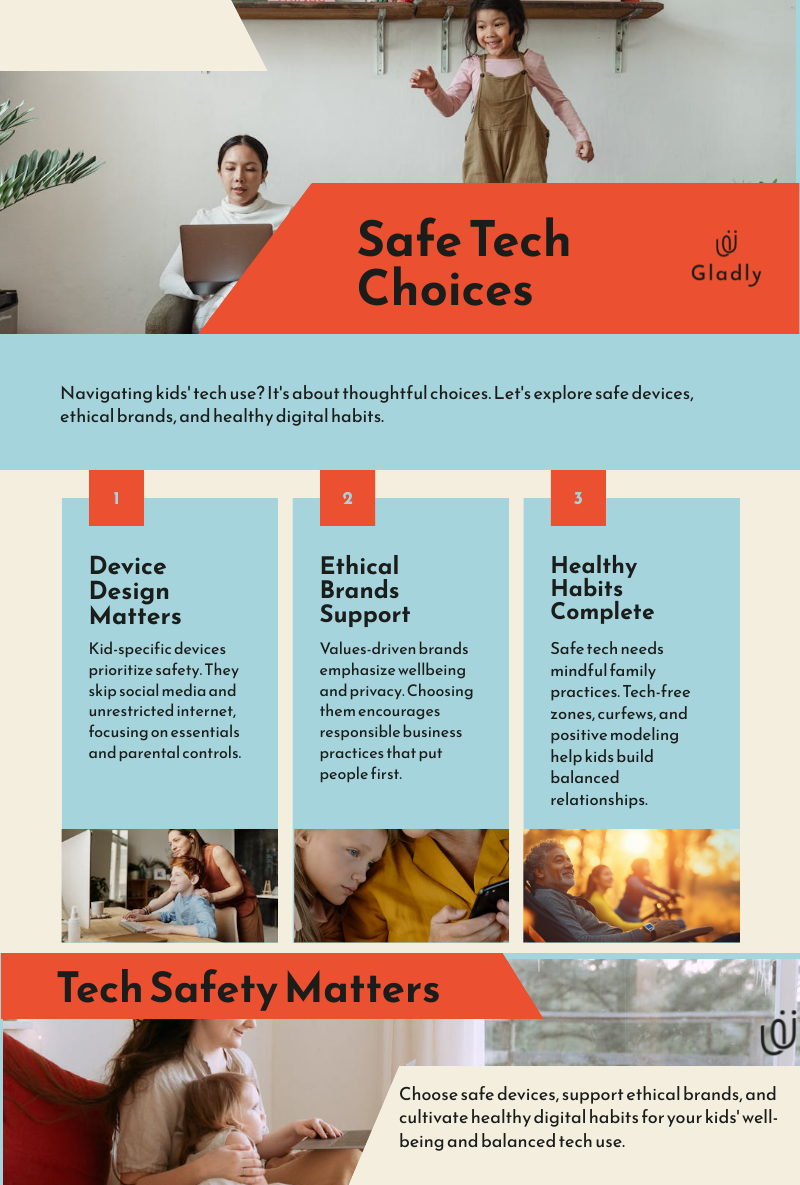Most parents want their kids to grow up confident and connected, but also safe when they go online. Maybe it’s a phone that lets them message friends without opening the door to strangers, or a watch that keeps them close even when they’re far from home. Those choices shape how kids learn to navigate the digital world.
The challenge is knowing which devices truly support that vision. Not every “child-safe” label tells the full story.
In this article, we’ll explore what ethical tech for families really means, the features that matter most, and how Gabb Wireless is helping parents feel good about saying yes to technology.
Why Safe Technology Matters More Than Ever for Modern Families
Digital devices have become an extension of our family lives. From virtual classrooms to video calls with grandparents, technology connects us in meaningful ways. Yet this connectivity brings challenges. We need thoughtful approaches to manage these challenges effectively.
The Hidden Risks Parents Are Just Discovering
A recent national survey revealed some concerning trends about screen time. Nearly half (47%) of parents rank privacy and safety as their greatest fear regarding children’s digital activities. This finding comes from the Kids Mental Health Foundation.
When we allow unregulated devices in our homes, we often expose children to data collection without clear consent. This potentially leads to targeted advertising or worse privacy breaches.
Beyond privacy issues, inappropriate content exposure remains a significant concern for many of us. Nearly 80% of internet users are unaware of deepfakes and other advanced manipulation techniques. These can bypass traditional content filters, according to Cyberwise.
Children using unmonitored devices may also develop unhealthy usage patterns. This risk increases with unlimited access to addictive design features.
How Ethical Tech Brands Protect What Matters Most
When we choose ethical tech for families, we take a fundamentally different approach to design. Rather than maximizing engagement, we prioritize our children’s wellbeing through thoughtful features.
Built-in safety measures like Google’s School Time feature often help us manage online experiences. These tools maintain appropriate boundaries for our kids. As outlined in Google’s recent announcement, they include parent-approved contacts and enhanced monitoring capabilities.
We find that child-safe devices typically incorporate age-appropriate interfaces. These grow with your child over time. Many feature robust data protection protocols that limit information collection. The best options balance functionality with simplicity. They offer just enough features without overwhelming young users.
Finding the Sweet Spot Between Connection and Overwhelm
Many families actively manage their children’s digital consumption. Time limits and encouraging offline activities prove most effective in creating balance.
Try mindful listening techniques as a family to strengthen communication skills. These exercises can actually reduce screen dependency in children. Research studies show they boost empathy by 25% among participants.
Adding a balanced lifestyle to tech boundaries helps offset potential negative impacts. The American Heart Association suggests 150 minutes of weekly physical activity for adults. This provides a natural counterbalance to sedentary screen time.
- Set device-free zones in your home (bedrooms, dining areas)
- Establish tech curfews (devices off 1-2 hours before bedtime)
- Plan regular outdoor activities as a family
- Model healthy tech habits yourself

5 Essential Safe Tech Solutions Every Parent Should Know About
So, searching for technology that protects while it connects? The market for child-safe devices has actually expanded dramatically in recent years. Let’s explore five solutions that balance connectivity with safety.
Communication Devices That Keep Kids Connected the Right Way
Not every phone needs endless apps or a web browser to be worth having. Some are built for one purpose: helping kids stay in touch with the people who matter most, while shielding them from unnecessary online risks.
Gabb Wireless phones look and feel like regular smartphones, but skip social media, games, and unrestricted internet access. Instead, they focus on essentials like calling, texting, and GPS location sharing. Parents can approve contacts, set boundaries, and create “safe zones” that send alerts if a child leaves them.
This simplicity strengthens connection. By removing the distractions that often lead to overuse or unsafe interactions, devices like these give families more control over how and when their children connect, offering a middle path that blends independence with protection.
Learning Tools That Spark Curiosity Without the Rabbit Holes
Educational technology has evolved beyond simple games. Learning tools combine engagement with appropriate boundaries. By 2030, approximately 65% of children will work in jobs that don’t yet exist, making early exposure to technology essential for future success.
With different age groups in mind, coding kits teach programming concepts through hands-on projects. These typically work offline or within closed systems, pretty much eliminating exposure to inappropriate content while building valuable skills.
Educational tablets with robust parental controls allow you to set time limits, approve apps, and monitor usage. The best options often include pre-loaded content libraries curated by education experts rather than algorithms designed for maximum engagement.
Some systems even adapt to your child’s learning pace, providing just-right challenges. This personalized approach kind of helps maintain interest without overwhelming young learners who might otherwise get frustrated.
Entertainment That Actually Entertains Instead of Addicts
Quality entertainment for kids sometimes doesn’t need endless scrolling or addictive design elements. Several platforms now offer curated content libraries with age-appropriate videos, games, and activities that entertain without exploiting attention spans.
Have you tried ad-free subscription services? They remove the commercial pressure that often accompanies children’s content. This creates a more relaxed viewing experience and basically eliminates exposure to marketing messages your family might prefer to avoid.
Audio storytelling devices deserve special mention for their screen-free approach. These interactive speakers play stories, songs, and educational content without the visual stimulation that can actually interfere with sleep patterns or imaginative play.
We’ve found that limiting options sometimes leads to deeper engagement. When children aren’t constantly jumping between apps or videos, they often develop stronger connections to characters and stories, you know, enhancing both enjoyment and comprehension in the long run.
Your Family’s Guide to Choosing Tech That Matches Your Values
Values matter when selecting technology for our families. Research shows that 79% of consumers prefer brands whose values align with their own. This preference becomes especially important when choosing devices for our children. Let’s explore how to make tech choices that reflect what matters most to your family.
The Essential Checklist Every Parent Needs
Before purchasing any device for your child, you know, run through this quick safety assessment:
- Parental controls: Look for customizable settings that grow with your child. The best systems allow you to adjust permissions by age and maturity level.
- Privacy policies: Read the fine print about data collection. Companies should clearly explain what information they gather and how they use it.
- Battery life: Longer battery life actually reduces charging anxiety and the need for outlets in bedrooms.
- Durability: Kids drop things! Devices with solid construction and protective cases save money and frustration.
- Non-addictive design: Check if the interface uses attention-grabbing techniques like endless scrolling or random rewards.
Modern parental control features now go beyond simple website blocking. Many include screen time management and content filtering. Some even offer real-time alerts for concerning online behavior.
How Purpose-Driven Brands Lead the Way
Some companies design their products with safety and wellbeing as the starting point, not an afterthought. This philosophy shapes tools and devices that help families stay connected without compromising privacy or health.
From screen-time management features to age-appropriate design, these solutions show how ethical considerations can guide product development. The impact is real: a recent study found that 74% of global consumers prefer brands advocating for social causes, reflecting how values-aligned shopping has become mainstream.
Choosing these companies sends a clear message about the marketplace we want to create. Each purchase supports business practices that prioritize people alongside profits.
Smart Choices That Fit Every Budget and Make a Difference
Ethical tech doesn’t always mean premium prices. Understanding the three pillars of sustainability helps identify valuable purchases at various price points.
Consider these budget-friendly approaches:
- Start with refurbished devices from certified programs
- Look for modular designs that allow component upgrades
- Prioritize companies offering software updates for older models
- Check for trade-in programs that extend device lifecycles
The UN Environment Programme warns about our current consumption patterns. By 2050, we would basically need resources from three planets. This makes thoughtful purchasing decisions more important than ever.
When shopping for affordable ethical devices, look beyond price tags to company values. Check their repair policies and environmental commitments too. These factors often indicate products that provide better long-term value while aligning with your family’s principles.

Creating Your Connected Family’s Tech Story
Every device we bring into our homes becomes part of our family’s story. The way we choose and use technology today will shape how our children connect, learn, and explore tomorrow.
When we seek out tools designed with safety and wellbeing in mind, we’re supporting brands that share our values. It’s a way of building a digital world where connection feels genuine and mindful.

Gladly’s partner network makes it easier to find these kinds of solutions, offering exclusive discounts on purpose-driven brands. Explore it with your family, and choose the devices that keep you close, safe, and confident in the moments that matter most.











